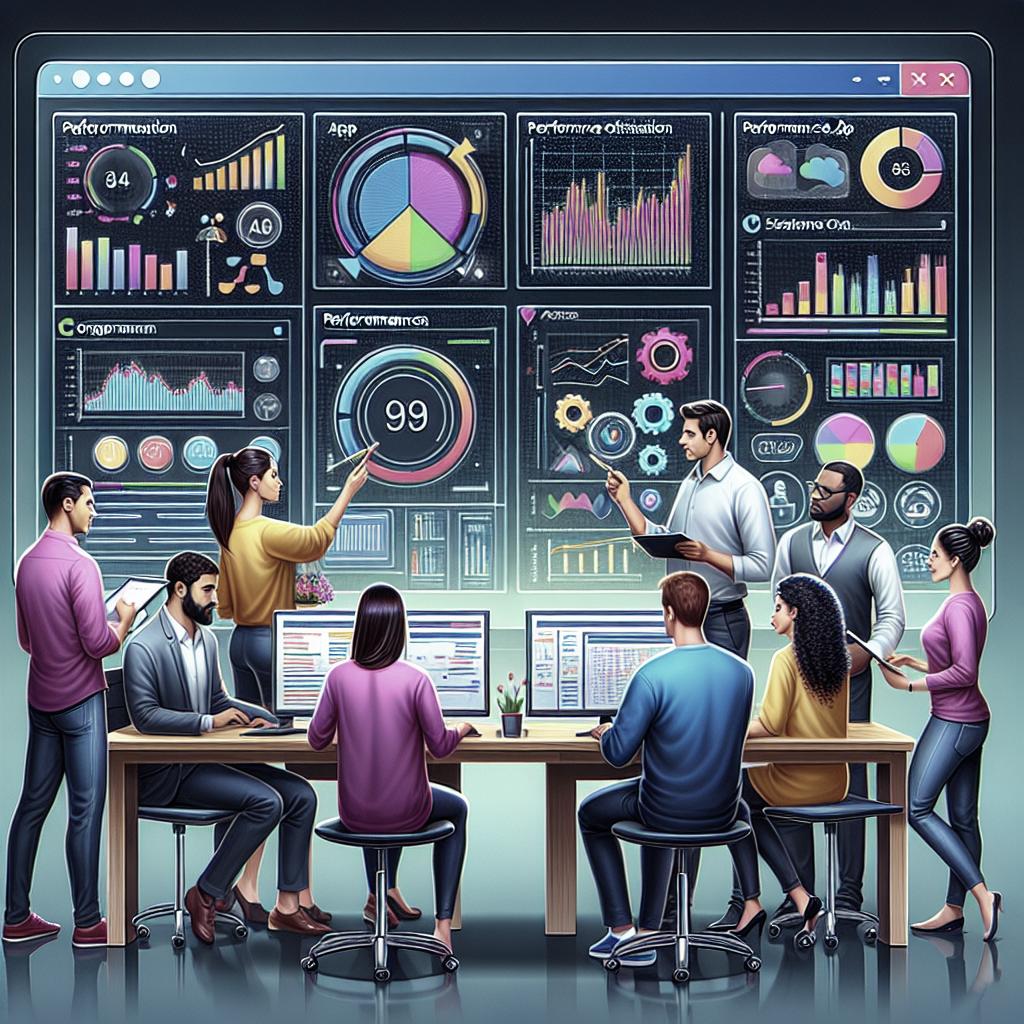Enterprise App Development Frameworks
In the swiftly evolving world of technology, cross-platform app development frameworks offer an efficient way to
develop apps that function seamlessly across multiple operating systems. Instead of building separate apps for each
platform—like iOS, Android, or Windows—developers can leverage these frameworks’ ability to create a single codebase
that runs everywhere. This article delves into what cross-platform app development frameworks are, explores some of
the most popular frameworks like Flutter, React Native, and .NET MAUI, and provides guidance on choosing the right
framework for your project. Understanding these concepts is vital for businesses aiming to reach a wider audience
with optimized resources and minimal time to market. We will also offer key takeaways and a summarized table of the
most critical points discussed.
What is a cross-platform app development framework?
A cross-platform app development framework is a tool that allows developers to create apps that are compatible with
multiple operating systems using a single codebase. The primary advantage of these frameworks is their ability to
optimize the development process by reducing the effort needed for individual platform-based coding. Such frameworks
enable developers to write the code once and deploy it across various platforms, significantly improving efficiency
and reducing maintenance costs.
Over the years, these frameworks have evolved, offering robust performance and native-like experiences. They provide
essential tools and capabilities to meet diverse app development needs, including UI components, access to device
hardware, and more. By balancing the creation of a shared codebase with the ability to customize for individual
platforms, they play a pivotal role in modern app development strategies.
Popular cross-platform app development frameworks
Flutter
Flutter, developed by Google, is an open-source UI toolkit that allows developers to build cross-platform apps with a
single codebase. Known for its high-performance rendering engine and Dart programming language, Flutter enables the
creation of visually impressive apps. The framework is particularly favored for its hot-reload feature, which allows
developers to see code changes in real time, drastically speeding up the development process.
Flutter’s flexible UI components make it possible to create tailored, platform-specific interfaces with ease, while
its vast array of add-ons and plugins simplify the integration of additional functionalities. With Google continually
investing in Flutter’s ecosystem, it remains a favorite for businesses seeking powerful app solutions with a focus on
design and performance.
React Native
Created by Facebook, React Native leverages the benefits of the popular React library to build mobile applications.
It uses JavaScript at its core and allows for the creation of rich, high-performance apps. React Native’s
architecture enables developers to create components that manage their own state, offering efficiency and flexibility
when building dynamic user interfaces.
The framework makes it relatively simple to develop native-like apps with code sharing across platforms. Moreover, it
has a strong community backing and extensive documentation, which can be very helpful for developers of all skill
levels. Businesses favor React Native for its robustness, rapid iteration capabilities, and reliable performance.
Kotlin Multiplatform
Kotlin Multiplatform stands out because it allows developers to share code among not just mobile platforms, but also
across web and backend applications. As Kotlin is officially supported by Google for Android development, this
multiplatform capability makes it highly attractive for businesses invested in the Android ecosystem.
It allows developers to write business logic and other codes once and use it across various environments, which helps
maintain consistency and reduces redundancy. Though relatively new compared to other frameworks, Kotlin Multiplatform
is quickly becoming a crucial tool for enterprise app development, particularly as companies seek to streamline code
maintenance and project timelines.
Ionic
Ionic is an open-source framework that focuses on building hybrid mobile apps using web technologies like HTML, CSS,
and JavaScript. By wrapping web apps in a native container, Ionic makes it possible to deploy them across multiple
platforms with a near-native experience. It integrates smoothly with Angular, a popular front-end framework, enhancing
its ability to create powerful app solutions.
The Ionic framework comes equipped with a vast library of components and themes, making customization and deployment
fast and efficient. Its strong community and mature ecosystem provide reliable support, allowing developers to craft
high-quality, beautiful apps efficiently. For businesses seeking rapid deployment without compromising on quality, Ionic remains a trusted choice.
.NET MAUI
.NET Multi-platform App UI, or .NET MAUI, is the evolution of Xamarin.Forms and embraces the .NET 6 platform. This
framework supports the development of cross-platform apps for Android, iOS, macOS, and Windows with a single codebase.
It is maintained by Microsoft, which ensures robust support, continuous updates, and seamless integration with
the broader .NET development environment.
By leveraging .NET MAUI, developers can access native platform APIs and features, providing the flexibility to create
apps with a consistent look and feel across platforms. Its focus on performance and streamlined workflow makes it
particularly appealing for enterprises that already work within the Microsoft ecosystem.
NativeScript
NativeScript is another powerful framework that allows for the creation of mobile apps by using JavaScript, TypeScript,
or Angular. It provides developers with direct access to Native platform APIs, paving the way for truly native app
functionality. With NativeScript, developers can harness the power of native UI without leaving the comfort of
JavaScript.
Featuring a robust library, NativeScript supports extensive customization and integration, thereby enabling the
development of highly dynamic applications. Its focus on native development through web technologies makes it a
favorable option for teams seeking to balance performance with fast development cycles.
How do you choose the right cross-platform app development framework for your project?
1. The expertise of your team
Before selecting a framework, consider the existing skill set of your development team. Choosing a framework that
aligns with your team’s expertise can accelerate the project timeline and reduce learning curves. If your team has a
strong background in JavaScript, frameworks like React Native or NativeScript might be the most suitable choices.
Additionally, leveraging the strengths and past experiences of your team can contribute to a more cohesive
development process, ultimately improving project outcomes. Training and upskilling might be necessary if the team is
new to a particular framework, so factor in any additional time and resources required.
2. Vendor reliability and support
Assessing the reliability of the framework’s vendor and the level of support available is critical. Established
frameworks with strong organizational backing—such as Flutter by Google or .NET MAUI by Microsoft—tend to have a more
stable evolution path and dedicated support.
A robust support network, coupled with frequent updates and a detailed documentation repository, can assist your team
in mitigating potential issues. These elements are crucial for long-term project sustainability and risk
minimization.
3. UI customization
The level of UI customization required for your app is another essential consideration. Some frameworks prioritize
UI/UX and offer advanced customization options, like Flutter, known for its expressive and flexible UI design
capabilities, while others may offer more limited UI components.
Consider frameworks that align with your app’s design objectives to ensure you can deliver a user experience that
meets your target audience’s expectations. Sampling various frameworks through prototypes can also help in deciding
the best fit.
4. Framework maturity
The maturity of the framework can greatly influence its reliability and the richness of its feature set. Mature
frameworks typically benefit from extensive testing, community feedback, and revisions, ensuring stability and
performance.
Exploring user reviews, checking the size and activity within the user community, and analyzing any recent updates
can provide insight into how reliable and polished a framework is. This information will inform you about potential
risks and inform complexity assessments.
5. Framework capabilities
Matching the technical and functional capabilities of a framework to your project’s requirements is paramount. Some
frameworks are better suited for specific types of applications due to their underlying architecture and support for
plugins, APIs, and other integrations.
Investigate whether the framework efficiently supports necessary app features, such as hardware interaction, data
management, and other back-end services. Balancing capabilities with ease of use is key to selection, ensuring both
comprehensive functionalities and manageable development processes.
6. Security
Security should be a priority in selecting a cross-platform framework, especially for enterprise apps that handle
sensitive data. Each framework varies in its approach to security, from built-in measures to supported security
packages.
Evaluate the security features and best practices recommended by the framework vendor, ensuring it meets your
industry’s standards and requirements. Taking security into account early in the selection process minimizes
vulnerabilities and protects user data integrity.
7. Educational materials
The available educational materials, including documentation, tutorials, and community forums, are vital for learning
and troubleshooting within a framework. Comprehensive, accessible materials can significantly reduce development time
and provide solutions to common issues.
Thoroughly vet the quality and abundance of these educational resources before committing to a framework to ensure your
team has the needed tools to efficiently overcome challenges. Also, consider frameworks with active and inviting communities that foster collaboration and learning.
Key takeaways
The choice of cross-platform app development frameworks impacts every stage of the app lifecycle. Frameworks like
Flutter, React Native, and .NET MAUI each present unique advantages and considerations. Evaluating your team’s
strengths, vendor support, customization needs, and security requirements, among other factors, are crucial steps in
this process. By understanding these frameworks comprehensively, you can make informed decisions towards building
powerful, efficient, and secure enterprise applications.
| Framework | Strengths | Considerations |
|---|---|---|
| Flutter |
|
|
| React Native |
|
|
| Kotlin Multiplatform |
|
|
| Ionic |
|
|
| .NET MAUI |
|
|
| NativeScript |
|
|


